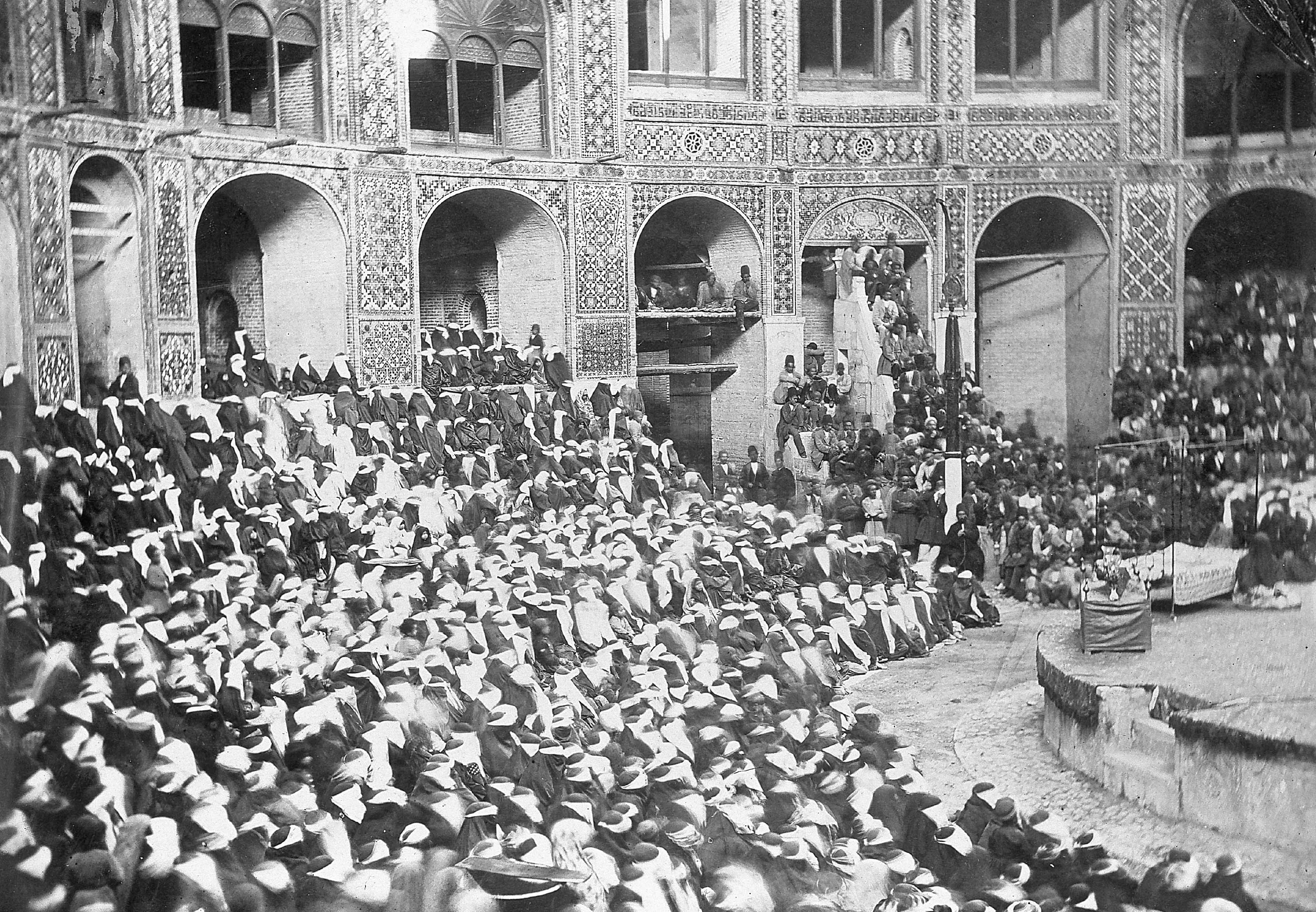An exhibition of historical photographs from the traditional Ta’zieh performances and mourning rituals in the month of Muharram during the Qajar era (1786-1925) opened on Tuesday at City Photo House Museum.
The show is named “Tekyeh Dowlat” after the famous Qajar venue built on the orders of the former ruler, Nasser al-Din Shah (1831-1896), for Ta’zieh performances. It features more than 50 photos from the mourning ceremonies of the time in the historical place, Galleryinfo.ir reported.
Tekyeh Dowlat was once the symbol of Tehran and the biggest space for performing the annual mourning ceremonies.
Ta’zieh, condolence theater or passion play, is a ritual inspired by historical and religious events that led to the tragic martyrdom of Imam Hussein (PBUH), the third Shia Imam and the grandson of Prophet Muhammad (PBUH), symbolizing faith, resistance, selflessness and sacrifice.
The month of Muharram is a period of national mourning, marking the martyrdom anniversary of the Imam and his 72 family members and companions who were martyred by the army of Yazid, the Umayyad caliph, in the historic Battle of Karbala (in Iraq) in 680 AD.
Muharram mourning ceremonies have long been intertwined with Iranian culture and are often manifested through various mediums of arts.
The photos on display at the City Photo House Museum are part of a study by the architect Mansour Karamzadeh-Shirani on Tekyeh Dowlat and the Ta’zieh ceremonies held there.
The venue, located at Bahar Shiraz Avenue, Haft Tir Sq., will host the show until October 11.


